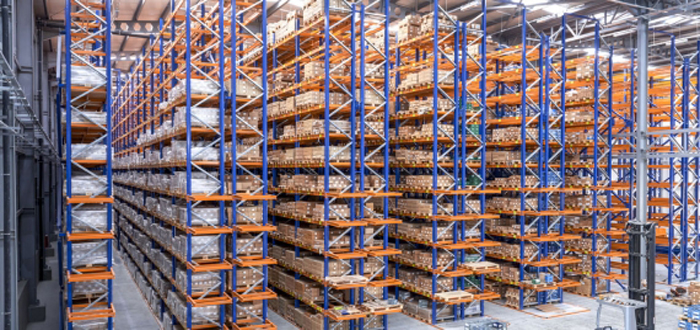-
Nutrivend selects Forterro’s Orderwise to support online expansion and streamline operations - April 11, 2025
-
ARROWXL LAUNCHES AMBITIOUS ZERO WASTE ROADMAP - April 8, 2025
-
THE BCMPA’S NEW CAMPAIGN DRIVES OUTSOURCING SUCCESS IN Q1 - April 7, 2025
-
BLACKOUT TECHNOLOGIES TARGETS TELEMATICS-INTEGRATED MOBILE DEVICE BLOCKING TO COMBAT SMARTPHONE DISTRACTION - April 1, 2025
-
OpenADR Alliance announces first OpenADR 3.0 certified products with EVoke Systems, E.ON Energy and Universal Devices - March 25, 2025
-
Growing fulfilment and contract packer appoints new Managing Director - March 25, 2025
-
When is it time to invest in a WMS? Understanding the key trigger points - March 25, 2025
-
eCapital helps Vantage Recruitment on its journey to financial success - March 24, 2025
-
Hugo Beck Celebrates 70 Years of Packaging Innovation with Open House Events - March 20, 2025
-
PROLOG FULFILMENT SUPPORTS LUNA DAILY’S COMMITMENT TO BETTER BODY CARE FOR ALL WOMEN - March 19, 2025
Growing consumer demand is leading to greater assortment of order picking solutions in the warehouse.
As consumer demand rises so does the strain being put on the entire supply chain. The current rate of change within the industry is putting a mounting of pressure on retailers to be able to fulfill orders as efficiently as possible. In the first instance, many organisations may be inclined to try to overhaul their legacy Warehouse Management Systems (WMS). Sebastien Sliski, General Manager, Supply Chain Solutions at Zetes explains why this potentially costly exercise may not be best way to optimise processes. Instead warehouse operatives should be using a more holistic approach, including implementing an assortment of order picking solutions, which will allow more complex orders to be fulfilled within one single warehouse.
With increasing consumer demand for a truly omni-channel experience, retailers are having to be innovative; finding more efficient and cost effective ways of fulfilling orders that are far more complex than the traditional warehouse and Warehouse Management System’s (WMS) are used to handling.
The trend for many years has been for larger retailers to focus on hypermarket and supermarket style stores – with a centralised warehouse and one picking process in place. Essentially, a one size fits all solution which allowed the warehouse to push stock to the store. Today, the supply chain is demand driven, with stores pulling stock that is in high demand and consumers ordering what they need directly from the warehouse. This ’omni-channel effect’ is bringing a number of challenges into the warehouse and orders are no longer as straightforward as they once were.
As well as complicated orders, it’s also the types of store that are creating complexities within the order preparation operation. Large retailers are now looking at having different types of store front – it’s possible that one retailer can now have an online store, a hypermarket, a supermarket and several convenience stores. The main take-away from these different kinds of store is that they aren’t ordering the same products and moreover, they aren’t ordering the same quantities. With more and more retailers working hard to provide an omni-channel experience for an ever-demanding consumer, what the industry is now seeing is a single warehouse undertaking picking operations in three or four different ways.
To be able to adopt this new way of working and to bring more innovative order picking solutions to the warehouse, many retailers may firstly try looking at upgrading the WMS. This can prove time consuming and costly – and in most cases, by the time they have implemented and got the ‘new’ technology up and running, they already need to be using something else, whether it’s Voice Picking, Pick-to-light or Artificial Intelligence (AI).
If we look at retailer that has chosen to invest in an automated warehouse, as an example. Before installing the technology they’ll need to analyse order volumes. A warehouse may currently deal with 40,000 boxes and this is what they will base the automation on. But, what if they needed to move 60,000 boxes tomorrow? Quite simply, the warehouse wouldn’t be able to cope. Equally if they were to over-value and input 60,000 boxes and then it averaged out at 45,000, this would result in an investment issue. Undoubtedly, there is a space for more agile solutions that are sustainable and more importantly scalable.
In order to build ‘best of class’ picking operations, there are things that a retailer must first look at and these can include voice for those orders with limited travel time, but also, Pick to Light, which is good for slow moving orders. A single warehouse could also have Pick-to-Cart and vision technology to do things that historically may have been done with handheld devices. Creating advanced functionalities within legacy WMS solutions with a pick and mix of three or four process driven solutions allows retailers to unlock agility within their supply chain. Ultimately, meaning that if a more efficient technology became available tomorrow they would be capable of introducing it without overhauling their entire WMS.
Due to its very nature technology is rarely agile; the well thought out processes and systems in place will allow for the required flexibility within the supply chain. If an effort is made to create agile processes, the introduction of the latest technology should be simplified.
Retailers need to make a conscious effort to scrutinise all of their processes in a bid to identify where small but significant changes can be made to make order fulfilment operate more smoothly. Organisations should recognise that technology shouldn’t drive or constrain the order picking solutions that they choose to implement. By embracing a more holistic approach to optimising the warehouse, retailers will be in a position to make the most of the latest and most innovative solutions that are best suited to them as opposed to a ‘one size fits all’ approach.
Due to its very nature, technology is rarely agile; the well thought out processes and systems in place will allow for the required flexibility within the supply chain. www.zetes.co.uk

































